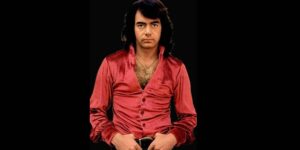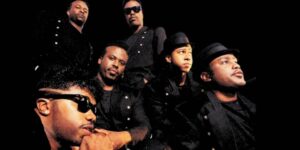A New Era of Music and Culture
The 1992 rave culture was a pivotal moment in the development of electronic music. This was a time when electronic dance music (EDM) was still finding its footing, and ravers were pushing the boundaries of what was possible. Rave culture was not just about the music, it was a way of life, a community, and a movement. The rave scene was characterized by all-night parties, glow sticks, and a sense of belonging. It was a place where people could let their hair down, express themselves freely, and connect with like-minded individuals.
The Music of the 1992 Rave Culture
The music of the 1992 rave culture was characterized by its fast-paced tempo, heavy basslines, and euphoric synthesizers. This was a time when genres like techno, trance, and hardcore were emerging, and producers like Juan Atkins, Kevin Saunderson, and Derrick May were pushing the boundaries of what was possible with electronic music. Artists like The Prodigy, The Chemical Brothers, and Underworld were also making a name for themselves, and their music would go on to influence a whole new generation of electronic artists.
Technotronic: A Soundtrack for the Revolution
One of the defining features of the 1992 rave culture was the music of Technotronic, a Belgian act that embodied the spirit of the era. Their hit single “Pump Up the Jam” was a fusion of hip-hop, techno, and pop, and its infectious beat and catchy hook made it a anthem of the rave scene. The song’s success helped to bring electronic music to a wider audience, and paved the way for other artists to follow in its footsteps.
The Rise of Trance
Trance was another genre that emerged during the 1992 rave culture, and it was characterized by its dreamy soundscapes, euphoric melodies, and pounding beats. Artists like Tiësto, Armin van Buuren, and Paul Oakenfold were among the pioneers of this genre, and their music would go on to define the sound of the dance floor for years to come.
Hardcore and Its Influence
Hardcore was another genre that was emerging during the 1992 rave culture, and it was characterized by its fast-paced tempo, aggressive synths, and raw energy. Artists like The Prodigy, The Chemical Brothers, and Underworld were among the pioneers of this genre, and their music would go on to influence a whole new generation of electronic artists.
The Legacy of the 1992 Rave Culture
The 1992 rave culture was a pivotal moment in the development of electronic music, and its influence can still be felt today. The music of the era helped to shape the sound of electronic music, and the rave scene provided a platform for artists to express themselves and connect with their audience.
From Raves to Festivals
In the years following the 1992 rave culture, electronic music began to take its place in the mainstream, and festivals like Tomorrowland, Ultra Music Festival, and Electric Daisy Carnival became major events. These festivals brought together thousands of fans, and provided a platform for artists to perform their music.
The Evolution of EDM
The 1992 rave culture was just the beginning of the electronic dance music (EDM) revolution. Over the years, the genre has evolved and branched out in different directions, but its roots can still be felt today. From the tech-noir soundscapes of techno to the euphoric melodies of trance, and from the heavy basslines of drum and bass to the catchy hooks of EDM, the influence of the 1992 rave culture can still be felt.
Conclusion
In conclusion, the 1992 rave culture was a pivotal moment in the development of electronic music. This was a time when the scene was still finding its footing, and ravers were pushing the boundaries of what was possible. The music of the era helped to shape the sound of electronic music, and the rave scene provided a platform for artists to express themselves and connect with their audience.
FAQs
Q: What was the 1992 rave culture?
A: The 1992 rave culture was a moment in the development of electronic music characterized by its fast-paced tempo, heavy basslines, and euphoric synthesizers. It was a time when genres like techno, trance, and hardcore were emerging, and producers like Juan Atkins, Kevin Saunderson, and Derrick May were pushing the boundaries of what was possible with electronic music.
Q: Who were some of the key artists of the 1992 rave culture?
A: Some of the key artists of the 1992 rave culture include Technotronic, The Prodigy, The Chemical Brothers, and Underworld. These artists helped to define the sound of the era and went on to influence a whole new generation of electronic artists.
Q: How did the 1992 rave culture shape the sound of electronic music?
A: The 1992 rave culture helped to shape the sound of electronic music by providing a platform for artists to express themselves and connect with their audience. It was a time when the scene was still finding its footing, and ravers were pushing the boundaries of what was possible. The music of the era helped to define the sound of electronic music, and its influence can still be felt today.
Q: What was the impact of the 1992 rave culture on the electronic music scene?
A: The 1992 rave culture had a major impact on the electronic music scene. It helped to bring electronic music to a wider audience, and provided a platform for artists to express themselves and connect with their audience. It also helped to shape the sound of electronic music, and its influence can still be felt today.
Q: Are there any modern-day references to the 1992 rave culture?
A: Yes, there are many modern-day references to the 1992 rave culture. From the electronic music festivals that take place around the world to the modern-day artists who draw inspiration from the era, the influence of the 1992 rave culture can still be felt today.






